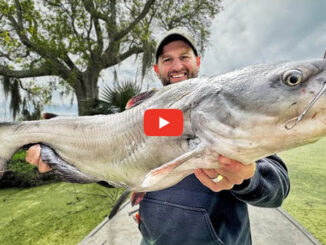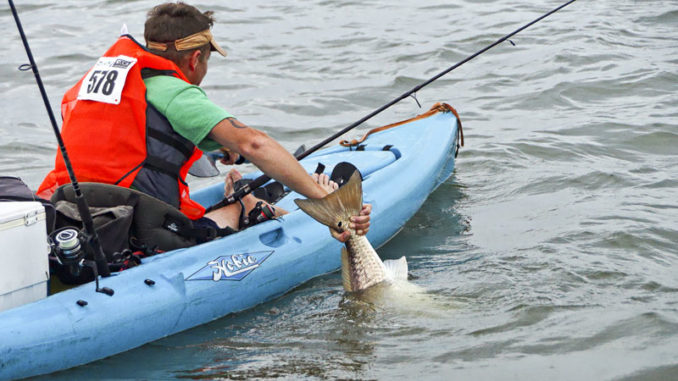
Editor’s Note: The organizers have made the decision to cancel this year’s Ride the Bull tournament.
To say that kayak anglers are eager to participate and return to some sense of normalcy is an understatement. More than 100 signed up in the first few days after registration opened for the world’s largest kayak fishing tournament, a catch-and-release redfish event.
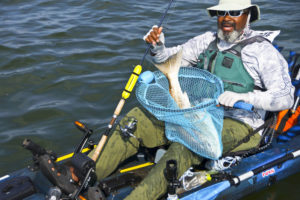
Bull redfish are a prize catch for Louisiana kayak anglers. They are hard fighters, not picky and readily take a variety of live, dead and artificial baits. A “Cajun sleigh ride” is the exiting experience of catching a giant fish from a tiny, plastic boat; that’s where the term originated.
As much about luck as it is skill, kayak anglers of all experience levels gather in a defined area of Caminada Pass within view of the host launch area at Bridge Side Marina. The shotgun start of hundreds of multi-colored kayaks into the pass is a spectacle like no other.
Anglers are advised to bring a selection of baits. Shrimp, cracked crab, chunks of cut mullet and pogies, aka menhaden, are favorites. Some anglers go the extra mile and try to gain an advantage with live offerings. While not necessary, live bait offers the advantage of keeping the pesky bait-stealers at bay. Live crab, white trout and croakers are known to tempt their share of bull reds. One trick is to use a light rod with Gulp to fish for a live white trout while your bull red rod is soaking.
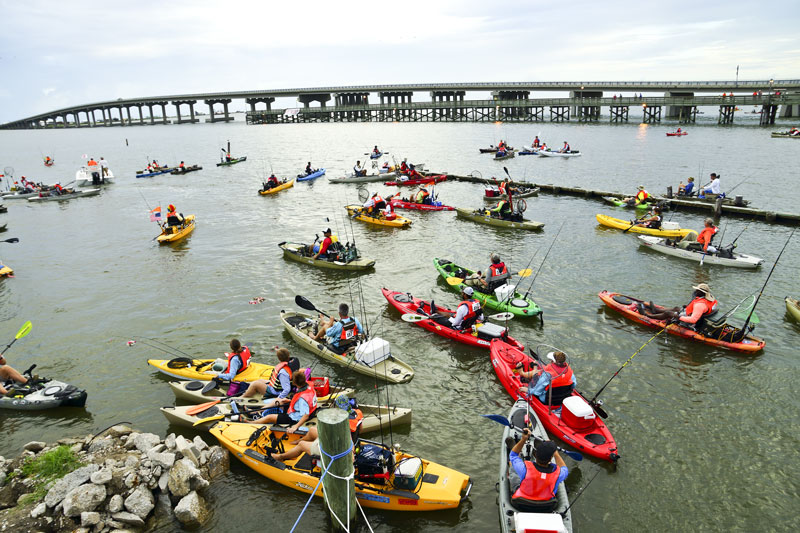
Bull reds are hard fighters, and they can almost outlast the angler during a battle. Gear up with a heavy spinning or conventional gear with 40- to 50-pound braid and a 50- to 60-pound mono leader. The heavier gear helps get the fish under control and landed more quickly, ensuring a healthy release. Rig your baits Carolina style with weights ranging from 2 to 4 ounces, depending on the current. Circle hooks in sizes 8/0 to 10/0 keep the fish from getting deeply hooked. Just remember not set the hook; once the red starts swimming off with your bait, begin to reel steadily, and the circle hook will magically anchor in the corner of the fish’s mouth.
Bridge Side Marina is stocked a variety of bait and pre-made “redfish rigs” that are ready to tie on and fish.
Bulls caught in the tournament average around 25 pounds, but several in the upper 30s are not uncommon.
While bulls are caught throughout the pass, anglers with depth finders are wise to seek out areas between 15 and 25 feet deep. Ledges and drop-offs are good places to stake out. The reds generally move through in small schools, and the action can get frantic as several anglers hook up at the same time. The bridge and rocks along the pass are popular locations that have seen their share of winning fish caught over the years.
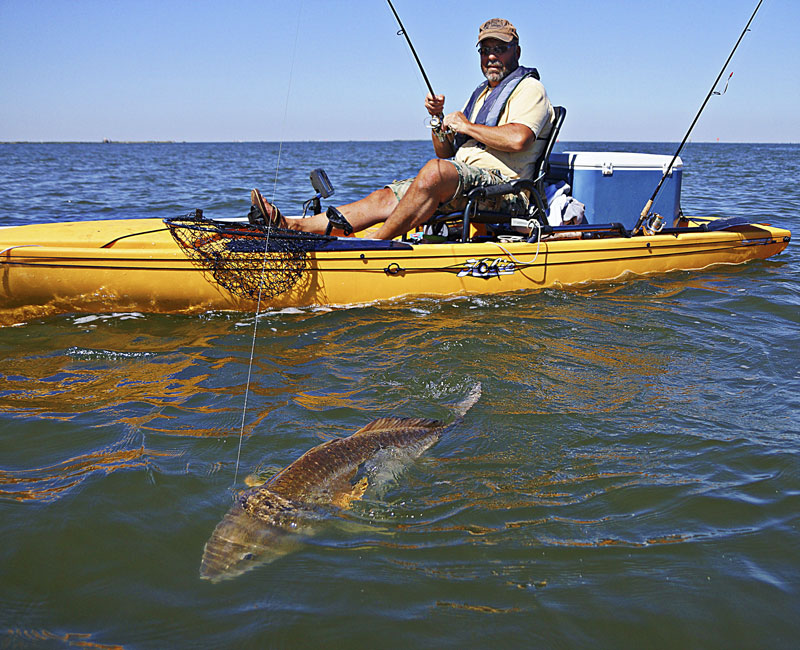
Tournament officials will have several assist boats milling around to pick up caught fish and bring them to the dock for weighing, tagging and release. Anglers often bring a large landing net or fish grip so the fish can be kept in the water until the assist boat arrives.
With so many kayaks on the water, the best strategy is to pick your spot and anchor up. However, in the event you must quickly unhook, have a float tied to the end of your anchor line so you can toss it out and easily return to your spot.
Proper anchoring is a key to success. A 2- to 5-pound Bruce- or Danforth-style anchor has proven best for solid holding on the sandy bottoms of the pass. About 75 to 100 feet of rope and a small length of chain helps ensure proper lie and holding of the anchor. The pass is not without snags, and the bottom is littered with many anchors that kayak anglers were unable to retrieve. Rigging your anchor to break away and retrieve backwards can save the day. Google “breakaway anchor rigging” to see how it is done.
